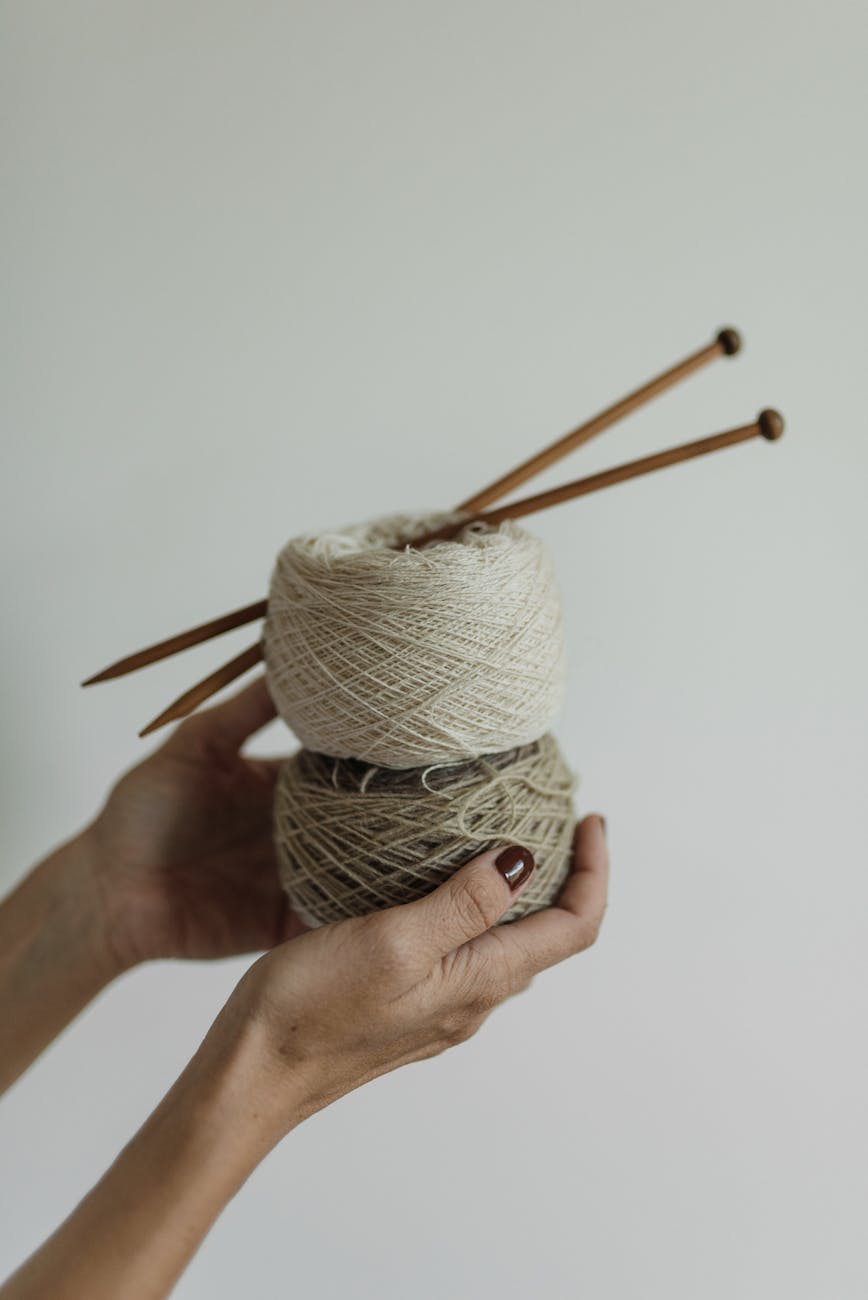choosing the right knitting needles: materials and sizes explained
Knitting needles come in a variety of sizes and materials to suit different yarns, stitch techniques, and personal preferences. Selecting the optimal needles for a project helps create even, consistent knitting with ease.
Needle size is determined by the thickness of the yarn you’re using. The thicker the yarn, the larger the needle size you’ll need. You can find needle size recommendations on the yarn label.
Needle material can also affect your knitting experience. Wood needles are a popular choice for their smooth glide and natural feel. Metal needles are another option, and they can be a good choice for working with slippery yarns.
Needle shape can also make a difference. Straight needles are the most common type of needle, but there are also circular needles and double-pointed needles. Circular needles are a good choice for knitting in the round, and double-pointed needles are a good choice for knitting small projects like socks.
Here are some additional tips for choosing knitting needles:
- Start with a small project when you’re first learning to knit. This will help you get a feel for different needle sizes and materials.
- Experiment with different needles until you find a combination that you like.
- Don’t be afraid to ask for help from a knitting instructor or experienced knitter.
With a little bit of trial and error, you’ll be able to find the perfect needles for your knitting projects.
Straight knitting needles
Here are some additional thoughts on choosing knitting needles:
- Consider your personal preferences. Do you like the feel of wood needles or metal needles? Do you prefer straight needles or circular needles?
- Think about the type of project you’re working on. Are you knitting a large garment or a small accessory? Are you knitting in the round or flat?
- Read the yarn label. The yarn label will tell you the recommended needle size for the yarn.
- Don’t be afraid to ask for help. If you’re not sure what size needles to use, ask a knitting instructor or experienced knitter for help.
Knitting Needle Materials
Aluminum – Lightweight,smooth, warm in hands. Budget friendly. Can bend if dropped.
Bamboo – Slight texture provides grip. Warmer feeling than metal. Eco-friendly choice.
Plastic – Smoothest finish glides through stitches. Static resistant. Flexible but can snap.
Wood – Classic warm look. Smooth but with slight grip. Natural material.
Carbon fiber – Mix of wood and carbon provides lightweight texture and strength.
Stainless steel – Very slick finish, excellent point glide. Can feel cool in hands. Durability.
Needle Composition and Features
Single point – Traditional straight needles with tapered point on one end and knob on other.
Double point – Short needles sold in sets of 4 or 5 for knitting in the round.
Circular – Two short needles connected by cables for working circular items.
Interchangeable sets – Let you switch between cables and tip sizes for ultimate flexibility.
Specialty – Offer notions like length markers, row counters, cords, or lighted tips.
Needle Lengths
Length is chosen based on the type of knitting and personal preference.
10-12” – Finger length, used for tiny projects like baby socks.
13-14” – Best all-purpose length for most knitters. Medium length.
15-16” – Provides better leverage for maintaining even tension on large projects.
17″+ – Extra long needles minimize hand strain on heavy knits like blankets.
Needle Size Measurements
Needle sizes are denoted by diameter in millimeters. Larger numbers indicate thicker needles. Sizes range from 0 to 50+mm.
0-3 (2mm-3.25mm) – For delicate lace and sock weight yarn
3-6 (3.25mm-4mm) – Appropriate for fingering, sport, and DK yarns
6-10 (4mm-6mm) – Used with worsted, Aran, chunky yarns
10-15 (6mm-10mm) – For heavy thick yarns like roving and super bulky
Choosing Knitting Needle Size
Always match needles to yarn thickness based on manufacturer recommendations on yarn label. Using properly sized needles maintains gauge. As a guide:
- Thinner yarns like laceweight need smaller diameter needles with more space between strands
- Bulky chunky yarns require thicker needles so loops don’t become overcrowded
- Test swatch with recommended needles, then adjust if gauge is off. Going up or down 1-2 sizes fixes most issues.
Choosing the right knitting needles can be a daunting task, but it’s important to take the time to find the right ones for you. By considering your personal preferences, the type of project you’re working on, and the recommended needle size for the yarn, you’ll be well on your way to creating beautiful, even knitting.
Here are some final tips for choosing knitting needles:
- Experiment with different materials and needle shapes. There are many different types of knitting needles available, so it’s important to experiment to find the ones that feel the most comfortable in your hands.
- Don’t be afraid to ask for help. If you’re not sure what size needles to use, ask a knitting instructor or experienced knitter for help.
- Have fun! Choosing knitting needles should be enjoyable. So take your time, experiment, and find the needles that make you happy.
I hope this article has helped you learn more about choosing knitting needles. With a little bit of research and trial and error, you’ll be able to find the perfect needles for your knitting projects.
